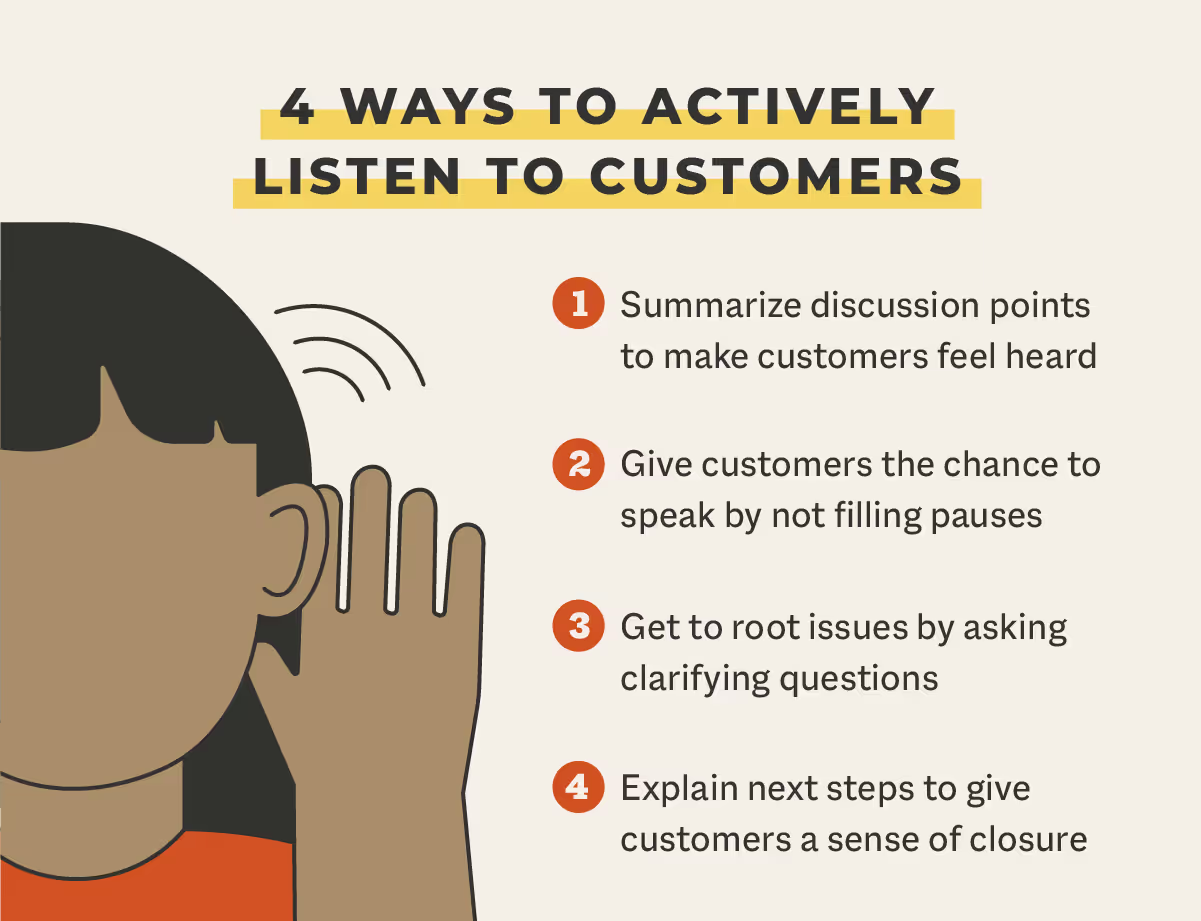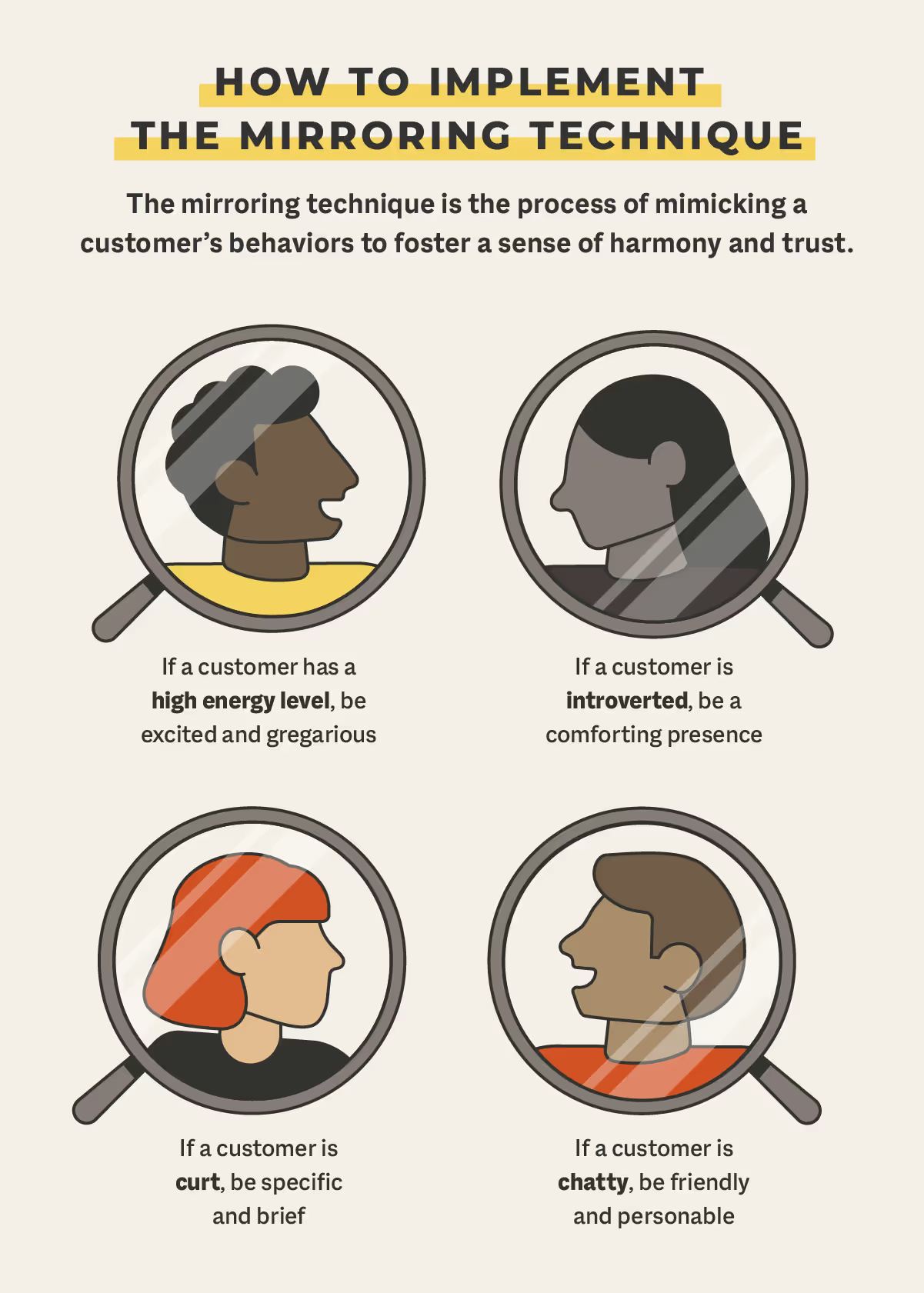10 Ways to Build Personal Connections With Customers
10 Ways to Build Personal Connections With Customers

In modern business, building personal connections with clients matters. When you create more personal connections with your clients, their trust in you increases.
Trust heavily influences who consumers purchase from. According to a 2019 Edelman Report, 81% of consumers stated they need to trust the brand to buy from them.
Moreover, when customers’ trust grows, so does customer retention. According to Frederick Reichheld of Bain & Company, a 5% increase in customer retention can increase profits by 25% to 95%.
The below guide will help your business build personal connections, which will strengthen your customers’ trust and increase your customer retention rate (translation: loyalty!).
View our infographic below for some important takeaways and actionable steps, plus statistics to help you remember just how impactful these changes will be for your business.
1. Respond to feedback
41% of Americans perceive reviews as one of the most important considerations when perusing local businesses. With reviews heavily influencing consumers’ purchasing decisions, it’s in your best interest to be attentive to these reviews.
When prospective clients come across reviews on your Google Business Profile or social media pages, they should see responses from someone at the business. ReviewTrackers found that 53% of consumers expect businesses to respond to negative reviews within seven days.
If you’re having trouble managing responses, especially on Facebook, within seven days, consider outsourcing your Facebook messaging responses.
Key takeaway: Responding to feedback shows current and prospective customers you’re attentive to their needs.
2. Actively listen
Part of any healthy relationship means being heard. This holds particularly true for customer relationships. Whether it’s your sales development or customer service representatives, they need to know how to make customers feel heard.
The easiest way to make customers feel heard is to actively listen to them.
Actively listening means intently absorbing the customer’s problems, needs, and pain points. Then, take that information and provide a targeted solution.
Here are a few ways your sales and customer experience (CX) reps can better listen to your customers.

If you’re short on time or staff to properly address all new leads and current customers, consider hiring virtual receptionists — they’re well trained in active listening and know how to build better relationships with clients.
Key takeaway: Both sales and customer service reps should practice active listening to make customers feel heard and engaged.
3. Be conversational
One way to make interactions with clients feel more personal is to be conversational.
For instance, instead of asking, “How are you?” be more specific. Try “How are you enjoying the weather in [their location]?” or “How was your [most recent holiday]?”
You can also share details about yourself first, such as “I’m currently in New York and can’t wait for these winter storms to pass. How’s the weather in your neck of the woods?”
Being conversational adds a human element to your business. You can also more easily bond over subjects of mutual interest and build personal rapport.
Key takeaway: Begin your sales and customer support calls with specific and engaging conversations to help build a personal connection.
4. Follow up immediately
Following up with sales leads is vital for your business’s success. Also, timing is everything.
When it comes to lead nurturing and sales, Harvard Business Review found that B2C and B2B U.S. firms that attempted to contact a potential client within an hour of receiving an inquiry were almost seven times as likely to qualify the lead as those who contacted a customer after an hour. These same businesses were more than 60 times as likely to qualify the lead as companies that waited 24 hours or longer.
It’s evident that if you’re not following up instantaneously with new leads, you’re losing potential customers.
You should also follow up with customers who recently purchased from you.
Jonathan Tian, a co-founder of Mobitrix, always makes sure that customers have a chance to give feedback. Tian recommends using surveys. According to Tian, a strong survey tool will “not only help you to determine the customers’ feelings about their experience but it also allows you to ask insightful questions. This will give you “specific feedback about various parts of their journey.”
To make sure your business isn’t losing new leads or existing customers, look into using outbound calling services.
Key takeaway: Follow up with new leads within an hour of being contacted by them. For current customers, send surveys to gather data on their customer journey experience.
5. Research relationships
Before hopping on a call, salespeople and customer support reps should have as much relevant information as possible about the customer. Team members ought to know the following:
- What stage of the customer journey the contact is in
- Previously resolved tickets or issues
- Current issue or nuisance
- How long they’ve been a customer or new lead
- Personal information (first and last name, location, preferred pronouns and language)
Having this information readily available makes it easier for team members to add personal touches to their conversations. In doing so, customers will feel more connected to your team members and thus your brand.
To help automate this relationship knowledge it’s important to have detailed notes in your customer relationship management (CRM) software.
Alex Mastin, CEO of Home Grounds, uses a CRM and database to stay closely connected with clients. He says, “We have a huge database that contains minute details about all of our customers. This information helps us break the ice when we meet them next time around.”
If you’re unsure which CRM is best for your company, review our list of the 10 best CRMs for SaaS and software companies. And for companies already using a CRM system, here’s our list of CRM integrations.
Key takeaway: Leverage CRM software to better know and serve each customer.
6. Incorporate the mirroring technique
Part of creating personal connections with customers means building rapport. One way to build camaraderie is to mirror the customer’s tone of voice, volume, and body language.

Time is precious on sales or customer service calls. Mirroring the customer can help your representatives quickly create a friendly and harmonious relationship with customers.
Here are a few ways your representatives can mirror clients, and moments when mirroring isn’t ideal:
- Tone: Take a cue from your customer’s tone. If they’re irritated or short on time, be brief and specific in your replies.
- Energy level: If a lead seems energetic and talkative, be gregarious as well and focus that energy on discussing the product or service. If the customer is more introverted or thoughtful, lower your voice and give them a few extra seconds to respond after you finish speaking.
- Body language: Mirroring a customer’s body language sends signals that you’re on the same page as them. Thus, if you’re in a virtual or in-person meeting with a new lead or customer, read their body language. If they sit up straight and are formal, then appear that way as well.
With only a voice, there's only so much you can learn about someone which is why video calls are so valuable. In fact, 31% of companies say video conferencing helps them build stronger relationships with customers, clients, and partners.
With the virtual workplace taking over, video calls are the ideal method to gain more insight into someone's body language and how they are feeling so we can better mirror them.
Key takeaway: Mirroring a customer’s body language, energy, and tone of voice can help your representatives quickly build rapport with clients.
7. Send personalized letters
One way to stand out in today’s digital world is to send handwritten letters or notes to your customers. It’s an unexpected gesture that adds a human element to your business.
For instance, Postal.io is a service that not only does great corporate gifts, but they offer handwritten notes that can be automatically generated after sales calls based on triggers from CRM activities.
You can add personal touches from previous calls or touchpoints that are recorded in your CRM. For example, you can ask how they like their most recently purchased product, or if they’re still experiencing a pain point.
When sending letters, make sure your customers can easily respond by leaving a return address and signing your first and last name.
Key takeaway: Humanize your business and show your customers you care by sending personalized letters.
8. Reward customers
There’s an old adage that 80% of your business comes from 20% of your customers. So, are you paying close attention to your VIP customers?
One way to increase repeat buyers is to make them feel valued and part of a community. Below are a few ways to make customers feel appreciated:
- Start a rewards or loyalty program to encourage repeat business
- Send repeat buyers unique discount codes and offerings
- Encourage referrals by rewarding customers who refer new customers
- Send open-ended surveys to check-in on customer satisfaction and see where you can improve — and reward participants with a small thank-you gift
Key takeaway: Repeat customers are worth investing in. Make them feel appreciated while simultaneously expanding your business.
9. Implement empathy maps
Empathy maps are a collaborative tool that customer experience (CX) departments can use to gain insight into their customers’ thought processes. Empathy maps help companies and team members put themselves in the shoes of the customers.
CX teams can use previous experiences or data to shape their empathy maps. Or if you’re releasing a new product with no customer feedback, an empathy map can help detect potential pain points the customer may experience.
Here is what an empathy map looks like for a long-standing product that needs an update.

Key takeaway: Use empathy maps to better understand and predict your customers’ and users’ behavior and sentiments.
10. Always follow through
If your plans with friends on a normal weekend fall through, no biggie. If your commitments to your customers fall short, that’s a huge issue.
This might seem obvious, but never commit to anything you cannot do in business — especially for a customer. Olivia Tann, a co-founder of CoCoFax, argues that if you make a promise you can’t keep, it “might seem fishy to the customer.”
Even worse, Tann argues that you’ll not only presumably lose a client, but this could also lead to “bad reviews and a lack of trust.”
In fact, customers are 21% more likely to leave a review following a negative experience than a positive one. Thus, overcommitting and not following through has lots of negative ripple effects. If you’re not sure you can commit to something, run the request up the flagpole and get back to the customer ASAP.
If you don’t expect an answer right away, tell the customer you’re communicating about it internally, and give them status updates often. Proactive updates go a long way in instilling patience in eager customers.
Key takeaway: Always follow through on commitments to customers. Not doing so can have major negative consequences.
For a summary of the above tips and intriguing statistics on customer trust, read our infographic below.

Creating personal connections with customers is what makes or breaks your business. Use these above-listed tips to build those customer relationships and retain repeat business.
If you’re having difficulty immediately following up with customer inquiries, look into Smith.ai’s services. We know how to make customers feel heard and appreciated because we employ hundreds of live agents every day who specialize in outreach campaigns, receptionist duties, and live chat services on behalf of busy businesses.
Sources: Edelman | Bain | Podium | ReviewTrackers 1, 2 | HBR 1, 2 | Lifesize | Acquia | Entrepreneur | BrightLocal | Scientific American | Journal of Experimental Social Psychology | PwC
Take the faster path to growth. Get Smith.ai today.
Key Areas to Explore
Technical Implementation Terms
Voice user interface (VUl) design
Speech recognition integration
Text-to-speech optimization
API connectivity and webhooks
Real-time data synchronization

Your submission has been received!











%20(1)%20(1).avif)
%20(1).avif)
%20(1)%20(1).avif)
.svg)



